There’s no magic formula for the best seats at a music concert-but there are smart choices. If you’ve ever paid extra for tickets only to feel like you’re watching the show through a keyhole, you know not all premium tickets are created equal. The truth? The perfect spot depends on the venue, the artist, and what you actually want from the night. Is it the bass in your chest? The artist’s eye contact? Or just a clear view without craning your neck for two hours?
Why Front Row Isn’t Always the Best
Front row seats sound like the dream-until you’re staring into the back of a drummer’s head or getting sprayed with sweat from a singer leaning too far over the barrier. At many arenas and amphitheaters, the first 10 rows are actually the worst for sound. The speakers are angled up and out, not down. You get a lot of high-end frequencies and zero low-end thump. At Madison Square Garden, for example, the front row speakers are mounted on trusses above the stage, not below. That means you hear the vocals and cymbals loud, but the kick drum and bass feel distant.At outdoor venues like Red Rocks or Glastonbury, front row means standing on uneven ground with no shade, no restrooms nearby, and a 30-minute walk back to your car after the show. For many, it’s not worth it.
The Sweet Spot: Center Orchestra, Rows 5-10
For most indoor arenas and theaters, the real sweet spot is center orchestra, between rows five and ten. This is where the sound engineers tune the mix. The main speakers are calibrated to deliver balanced audio here-bass, mids, and highs all in harmony. You’re close enough to see facial expressions, but far enough to take in the full stage setup. At the Spark Arena in Auckland, fans in these rows report the clearest vocals and most powerful low-end response. You’re not in the VIP section, but you’re getting VIP sound quality.These seats also give you the best angle for photos. No one’s blocking your view, and you won’t need a zoom lens to capture the lead singer mid-jump. At a Taylor Swift or Ed Sheeran show, this is where the crowd sings along in unison-and you’re right in the middle of it.
VIP Packages: What You’re Actually Paying For
VIP concert packages promise exclusivity. But what’s inside? Often, it’s a mix of good and gimmicks. Most VIP tickets include:- Early entry (1-2 hours before doors open)
- Exclusive merchandise (t-shirts, posters, sometimes vinyl)
- Access to a private lounge with food and drinks
- Commemorative laminate or pin
- Best available seating-usually rows 1-5, center or side
But here’s the catch: the seating in VIP packages is often the same as regular premium tickets. The real value isn’t the seat-it’s the early access and the merch. At a Coldplay show in Melbourne, VIP ticket holders got a custom light-up wristband and a signed lyric sheet. That’s memorable. The seat? Just a few rows closer than the $120 tickets.
Some VIP packages include meet-and-greets. Those are worth it only if you’re a diehard fan. Most meet-and-greets last 30 seconds. You shake hands, get a photo with a phone camera, and move on. The photo? Usually blurry. The interaction? Often scripted. If you’re paying $500+ for that, you’re paying for the fantasy, not the experience.
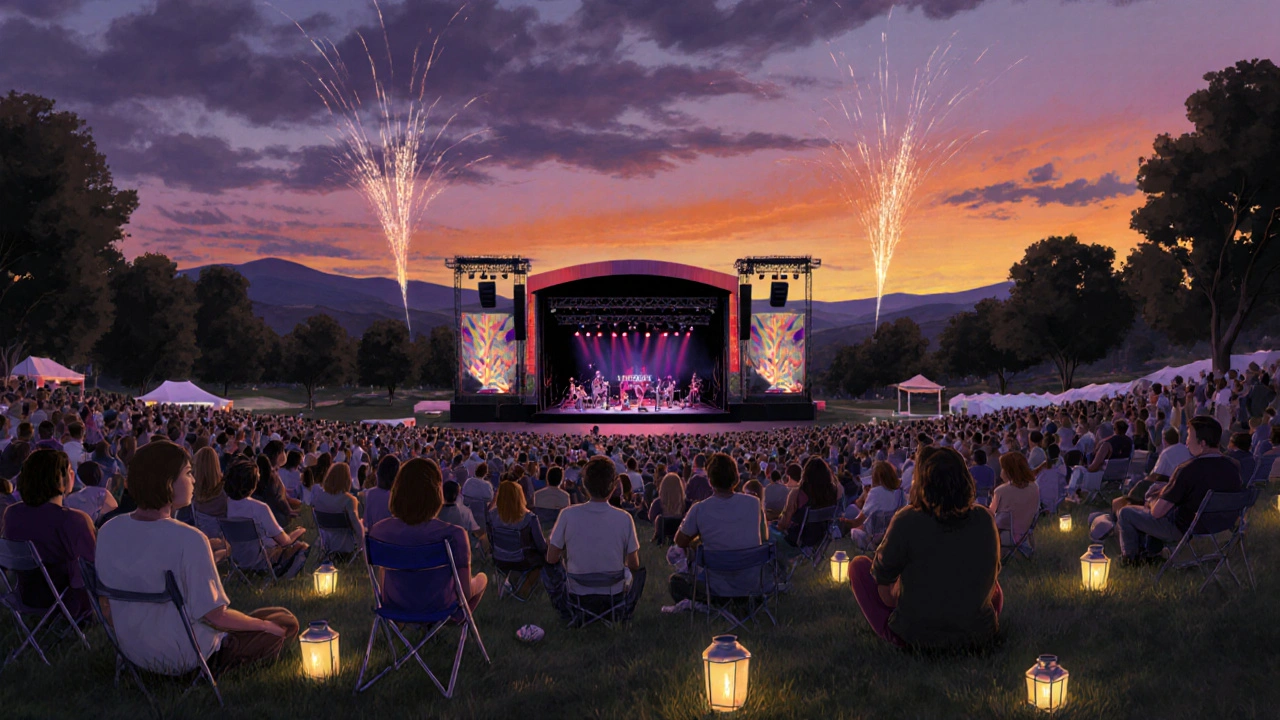
Outdoor vs Indoor: The Venue Changes Everything
At an indoor arena like the Vector Arena in Wellington, the sound is controlled. The best seats are center, 5-10 rows back. At an outdoor amphitheater like the TSB Arena in Taranaki, the stage is smaller, and the speakers are spread out. Here, the sweet spot shifts to the middle of the lawn, about 30-50 feet from the stage. You get the full soundstage, no echo, and room to move. Standing in the front rows? You’re fighting wind, dust, and a speaker tower blocking your view.At festivals like Rhythm & Vines or Homegrown, the stage is massive. The best seats aren’t seats at all-they’re spots on the hillside, behind the main stage. You get the same audio mix from the delay speakers, no crowds pushing you, and a view of the whole production. Many regulars bring foldable chairs and stay there all night.
How to Find the Real Best Seats Without Paying Extra
You don’t need a VIP package to get great seats. Here’s how to do it:- Check the venue’s seating chart on SeatGeek or Ticketmaster. Look for the section labeled “Best View” or “Recommended.”
- Search YouTube for fan videos from that exact venue and artist. Filter by “Most Recent.” You’ll see exactly what the stage looks like from different angles.
- Use SeatGuru (even if it’s outdated) to see which rows have the best sightlines. Many venues haven’t changed their layout in 15 years.
- Avoid side sections unless you’re seeing a band with a wide stage. At a rock show, you might miss half the performance if you’re in the far left or right.
- Buy early. The best center seats go fast. Don’t wait until the day of the sale.
At a recent Lorde show at Spark Arena, fans who bought tickets on the first day got center orchestra, row 7. Those who waited until the second wave ended up in the upper balcony. Same price. Totally different experience.
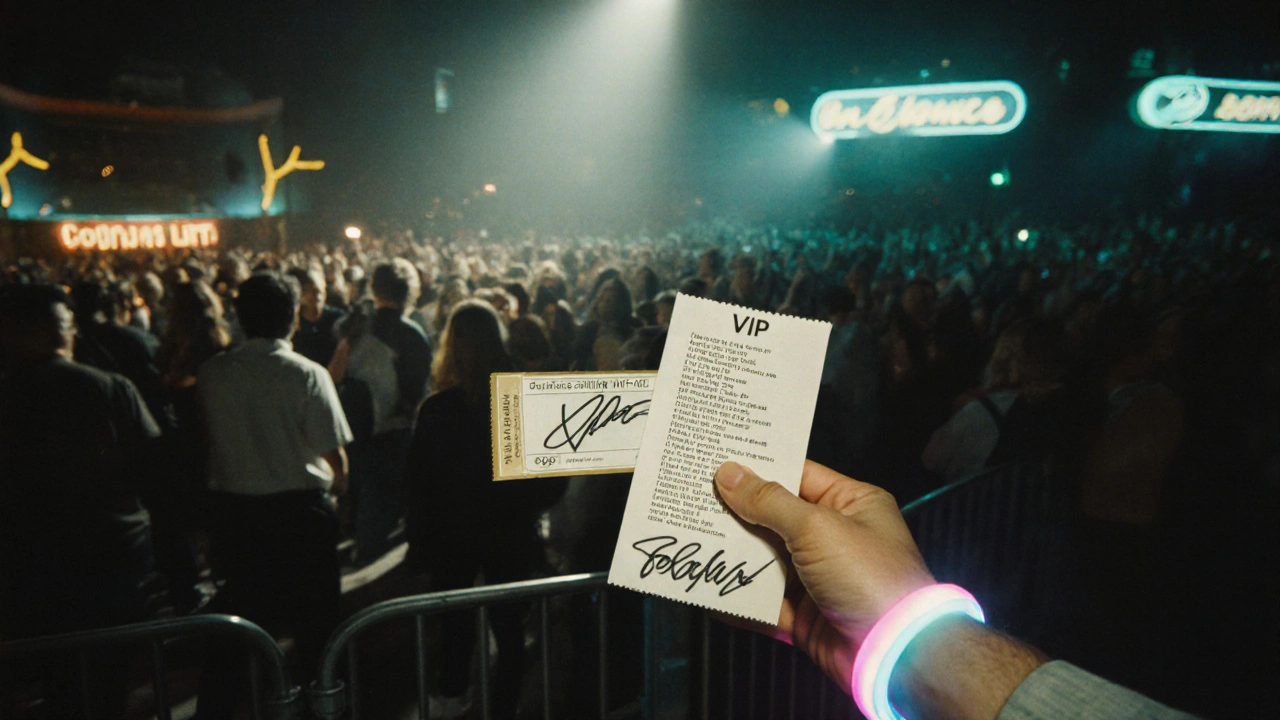
What About Balcony Seats?
Balcony seats get a bad rap. But at large venues, they’re often the best value. At the Auckland Town Hall, the upper balcony gives you a bird’s-eye view of the whole stage. You see choreography, lighting design, and crowd energy in a way you can’t from the floor. The sound is slightly muffled, but not bad-especially if the artist is acoustic or orchestral. At a classical concert or a solo piano show, balcony seats can be the most immersive.Just avoid the very back rows. If you’re more than 15 rows up, you’ll need binoculars to see the artist’s face. And if the venue doesn’t have good acoustics, you’ll hear mostly echo.
Pro Tip: Bring a Light Jacket, Even If It’s Summer
At most indoor venues, the air conditioning is set to 18°C. At outdoor shows, the temperature drops after sunset. You’ll be standing for hours. Bring a light jacket, even if you think you won’t need it. And don’t wear heels. You’ll be walking on concrete, climbing stairs, and maybe standing in mud. Comfort matters more than style.Final Rule: Match the Seat to the Show
A metal band? You want to be close-feet away from the mosh pit, feeling the bass in your ribs. A jazz trio? You want to be quiet, close, and in the center-so you hear every note change. A symphony? Go balcony. A pop spectacle with pyrotechnics and dancers? Center orchestra, rows 5-8.The best seats aren’t the most expensive. They’re the ones that match what you came for. If you want to feel the music, go lower. If you want to see the whole show, go higher. If you want to remember the night, skip the VIP gimmicks and focus on the sound, the view, and the vibe.
Are front row concert seats worth it?
Front row seats are rarely worth it for the sound. You’re often too close to hear the full mix-bass and low-end frequencies get lost. You’re also more likely to get hit by flying objects, sweat, or stage debris. They’re great for photos if you’re a diehard fan, but not for enjoying the music.
What’s the difference between orchestra and mezzanine seats?
Orchestra seats are on the main floor, closest to the stage. Mezzanine seats are the first balcony level. Orchestra gives you better sound and a more immersive feel. Mezzanine gives you a wider view of the stage and lighting design. For most pop and rock shows, orchestra rows 5-10 are ideal. For classical or theater-style shows, mezzanine can be better.
Do VIP concert packages include better seats?
Sometimes, but not always. VIP packages often include the same seats as premium tickets-just with early entry, merch, or a lounge. The real value is in the extras, not the seat location. Always check the seating chart before buying a VIP package. Don’t assume you’re getting the best spot.
Is it better to sit center or side at a concert?
Center is almost always better. Side seats can mean you’re watching the show from an angle-missing half the performance, especially if the artist moves around. At larger stages with multiple screens, side seats might be okay. But for live musicians, center ensures you see everything clearly and hear balanced sound.
How early should I arrive for a concert?
Arrive at least 45 minutes before doors open. This gives you time to find your seat, use the restroom, grab a drink, and get settled before the show starts. If you have VIP access, you can enter earlier-but still plan to be there when doors open. Lines get long, and venues don’t always let you in before the official time.

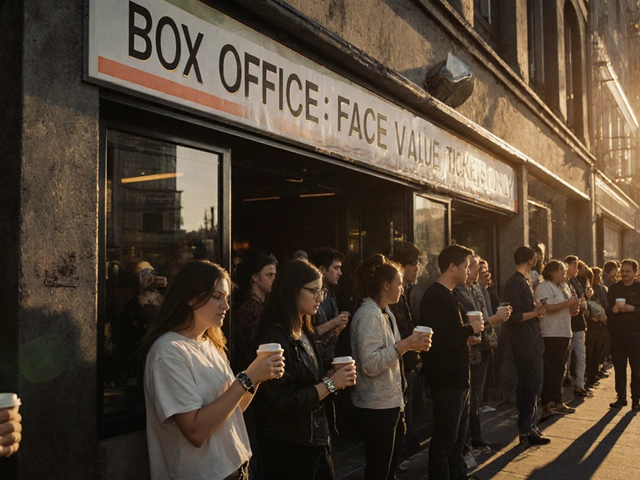
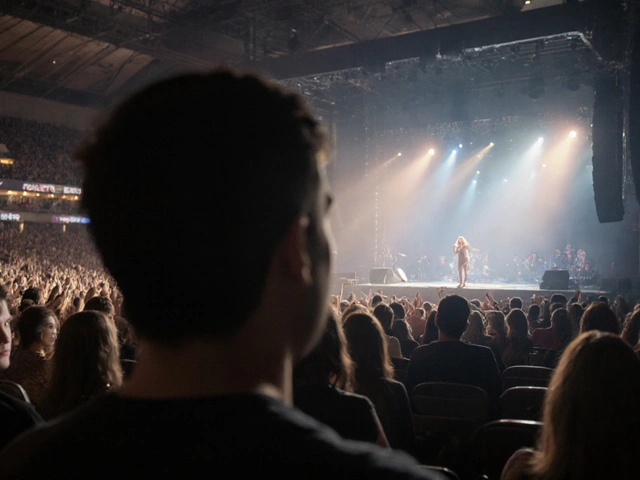


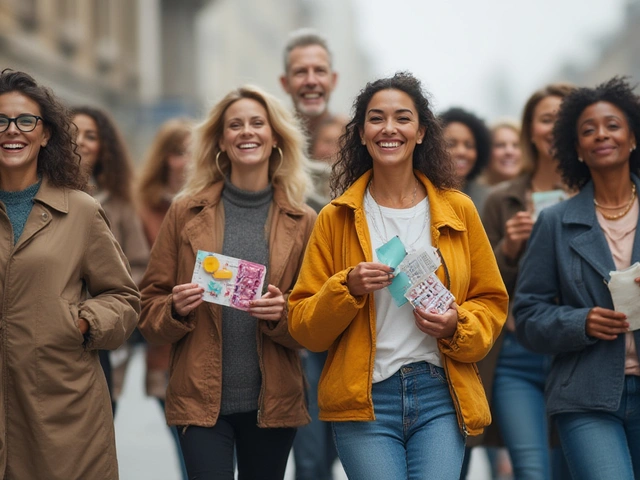
Jess Ciro
Front row is a scam designed by venues to sell overpriced tickets to people who think proximity equals experience
They don't tell you the sound engineers mix for row 7 not row 1
You're literally getting the worst audio in the building
And don't get me started on the sweat
It's not a concert it's a sauna with bass
saravana kumar
The so-called 'sweet spot' is a myth propagated by middle-class concertgoers who fear commitment
Real fans stand in the front
Even if the sound is distorted
Even if the bass is gone
Even if your shirt is soaked in stranger's sweat
You feel the energy
That's what music is about
Not perfect acoustics
But presence
Tamil selvan
I must respectfully disagree with the notion that front-row seats are universally inferior. While it is true that sound engineering may be optimized for mid-venue seating, the emotional impact of being physically close to the artist cannot be quantified by decibel levels alone. The vulnerability, the eye contact, the shared breath between performer and audience-these are the elements that transform a performance into a sacred experience. Moreover, many modern venues now employ directional speaker arrays that mitigate the high-frequency dominance at the front. Therefore, I urge readers to consider not only audio fidelity, but also human connection, when selecting seats.
Mark Brantner
OMG I JUST REALIZED I PAID $300 FOR BALCONY SEATS AT A DEPECHE MODE SHOW AND I COULDN’T EVEN SEE THE GUITARIST’S HAIR
WORTH IT THO
THE LIGHTS WERE FIRE
AND I GOT A FREE STICKER
AND I ATE A HOT DOG THAT TASTED LIKE REGRET
SO YEAH
THEY GOT ME
AGAIN
LOL
Kate Tran
People forget that concerts aren’t just about hearing
It’s about being there
My first concert was at Red Rocks
I sat in the back
Wore flip flops
Got caught in rain
Didn’t see a single face
But I felt every note
And that’s what I remember
amber hopman
Actually, I think the balcony seats at the Auckland Town Hall are underrated-especially for acoustic sets. I went to a solo piano recital there last year and the acoustics were stunning from the upper level. You could hear the pedal release, the subtle shifts in dynamics. It felt intimate, like you were in the same room as the musician. I’d rather be in the balcony with perfect clarity than front row, deafened by cymbals and sweating through my shirt. Also, no one’s elbowing you in the ribs.
Jim Sonntag
Front row? Nah
But VIP merch? Always
My Coldplay wristband still glows
And I’ve never worn it
But I keep it in a velvet box
Like a holy relic
Because the fantasy was real
Even if the seat wasn’t
Deepak Sungra
Why do people even care about sound quality at a concert? It’s not a hi-fi system
You’re there to be part of the crowd
To scream with strangers
To forget your job
To feel alive
Who cares if the bass is muffled?
You’re not listening
You’re surviving
And if you’re in row 7 thinking you’re special
Guess what
You’re just another person in a t-shirt
Waiting for the next song
Samar Omar
It is profoundly tragic how the modern concertgoer has been conditioned to equate value with proximity rather than aesthetic transcendence. The true connoisseur seeks not the physical closeness of the performer, but the metaphysical resonance of the sonic architecture. To sit in the center orchestra is to submit to the tyranny of the mainstream; to occupy the balcony is to ascend into the realm of the sublime. The acoustics of the Auckland Town Hall, when experienced from the upper gallery, are not merely ‘good’-they are a revelation, a Gnostic unveiling of the composer’s innermost soul. And yet, the plebeian masses, blinded by the glow of LED screens and the siren song of TikTok influencers, remain content with their $120 tickets and their myopic view of the stage. How sad. How tragically, beautifully, humanly sad.
chioma okwara
you said ‘you’re staring into the back of a drummer’s head’ but its ‘you’re staring at the back of a drummer’s head’
and ‘you get a lot of high-end frequencies and zero low-end thump’-zero should be ‘no’ or ‘little’
also ‘Taranaki’ is misspelled in one place
and ‘Vector Arena’ is in Wellington not Auckland
you clearly didn’t fact check
and you’re telling people how to pick seats?
lol
John Fox
Best seat? Wherever you end up
And you’re not thinking about it
When the lights go down
And the first note hits
You forget where you are
And that’s the point
Tasha Hernandez
Let’s be real-the entire concert industry is a beautifully packaged lie
They sell you the myth of intimacy
But you’re 200 feet away from someone who’s been on tour for 18 months
And you paid $200 to sit next to a guy who brought his dog in a stroller
And the VIP lounge? More like VIP snack bar with lukewarm nachos and a guy in a hoodie who says ‘you’re welcome’ like he’s doing you a favor
Meanwhile the band doesn’t even know your name
And you’re crying because you think you connected
It’s not a concert
It’s a cult
And I’m still in line
For the next one